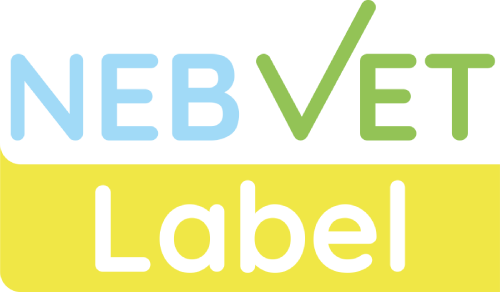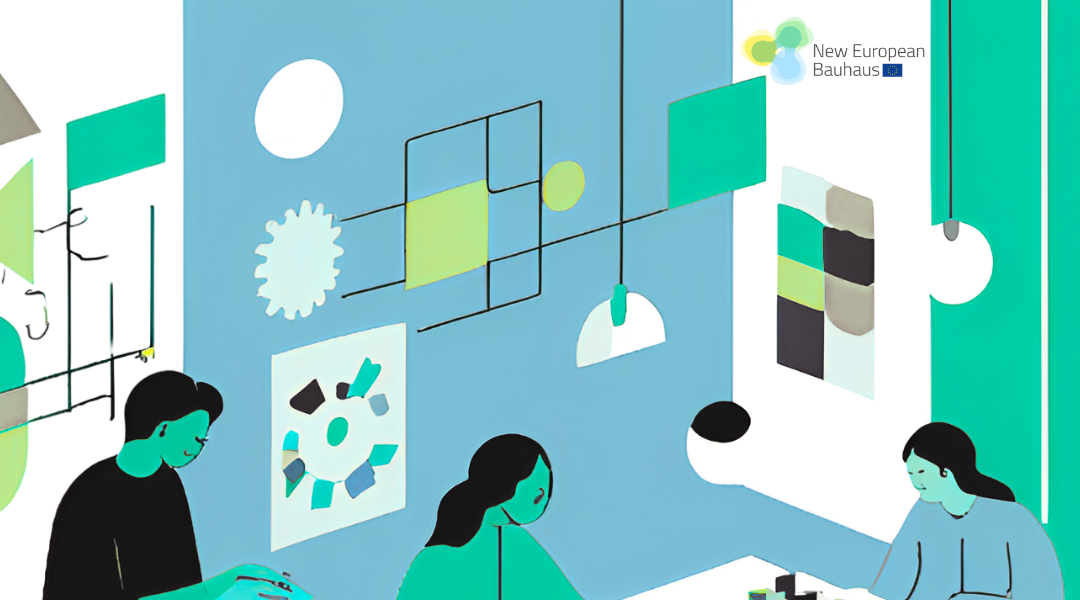How NEB working principles are changing the way we think about vocational education
The New European Bauhaus (NEB) is not just a visionary initiative—it’s a catalyst for reimagining how we live, learn, and collaborate. While rooted in sustainability and aesthetics, NEB also champions something more foundational: how we work together to shape our environments and societies. For vocational education and training (VET), this means aligning how we teach with how we want to live. At the heart of this transformation are three powerful principles: participatory processes, transdisciplinary approaches, and multilevel engagement.
Rethinking process: The power of participation
Participation in the NEB context goes beyond occasional consultations—it involves genuine co-creation. Whether developing a curriculum, designing a learning space, or launching a local initiative, participation means building with learners, educators, community members, public authorities, and businesses.
In VET, this translates to moving away from top-down planning and instead engaging students and stakeholders in shaping both content and delivery. A participatory approach strengthens local trust, reflects community needs, and makes learning more relevant and impactful.
Connecting scales: From local to global impact
Multilevel engagement bridges local action with regional, national, and international influence. NEB emphasizes that while transformation starts at the grassroots, it should ripple outward—informing policy, shaping networks, and inspiring shared action.
For VET providers, this might involve aligning programs with national green transition strategies, participating in European mobility projects, or collaborating with global partners to co-develop solutions. It’s not about standardization but about building flexible, connected learning ecosystems that support learners in navigating a globalized world.
Crossing boundaries: Embracing transdisciplinary thinking
Transdisciplinarity challenges us to break down silos between fields of knowledge. NEB projects often bring together scientists, artists, designers, urban planners, educators, and ecologists to co-create meaningful change.
For VET, this means designing programs that go beyond technical expertise to cultivate broader systems thinking. A course in sustainable construction, for instance, might weave together modules on digital fabrication, ethics, environmental policy, and community engagement—preparing learners not just for jobs, but for complexity and innovation.
Turning principles into practice: The role of self-assessment
Incorporating NEB working principles into VET requires more than inspiration—it demands structure and reflection. To support this shift, a comprehensive self-assessment framework has been developed, helping VET institutions evaluate how their initiatives align with NEB values.
This framework introduces nine Key Performance Indicators (KPIs)—three for each NEB principle—offering a practical method for understanding current performance and identifying areas for growth:
- Participatory Process: Learner and stakeholder involvement in decision-making, use of collaborative and co-creation learning methods and engagement with community and industry in shaping training.
- Transdisciplinarity: Integration of multiple disciplines in training programs, cross-sector collaboration and knowledge exchange and use of interdisciplinary approaches in real-world problem-solving
- Multilevel Engagement: Connections across local, regional, and international levels, alignment with broader policies and initiatives (e.g., Green Deal, SDGs) and empowerment of learners to influence change in society
Each KPI is assessed at three ambition levels:
- Basic – ensures foundational practices are in place
- Acceptable – reflects intentional and consistent efforts
- Good – represents a visionary approach that contributes to system-level change
This process helps institutions reflect critically—for example, on how meaningfully learners help shape programs, how well activities align with broader policy agendas, or how effectively cross-sectoral perspectives are integrated into learning.
What’s next? A culture of continual transformation
Embedding NEB principles in vocational education is not a one-time adjustment—it’s an ongoing journey. It requires iteration, experimentation, and a willingness to evolve. As the self-assessment framework is piloted and refined, and as more institutions build internal capacity, we will begin to see a broader cultural shift.
VET will emerge not only as a pathway to employment, but as a laboratory for Europe’s green and inclusive transition. It will prepare people not just to enter the workforce, but to shape the future—confident, connected, and ready to lead.
In this transformation, the NEB working principles are more than guidelines. They are the blueprint for a more beautiful, sustainable, and inclusive way of learning—and living.




